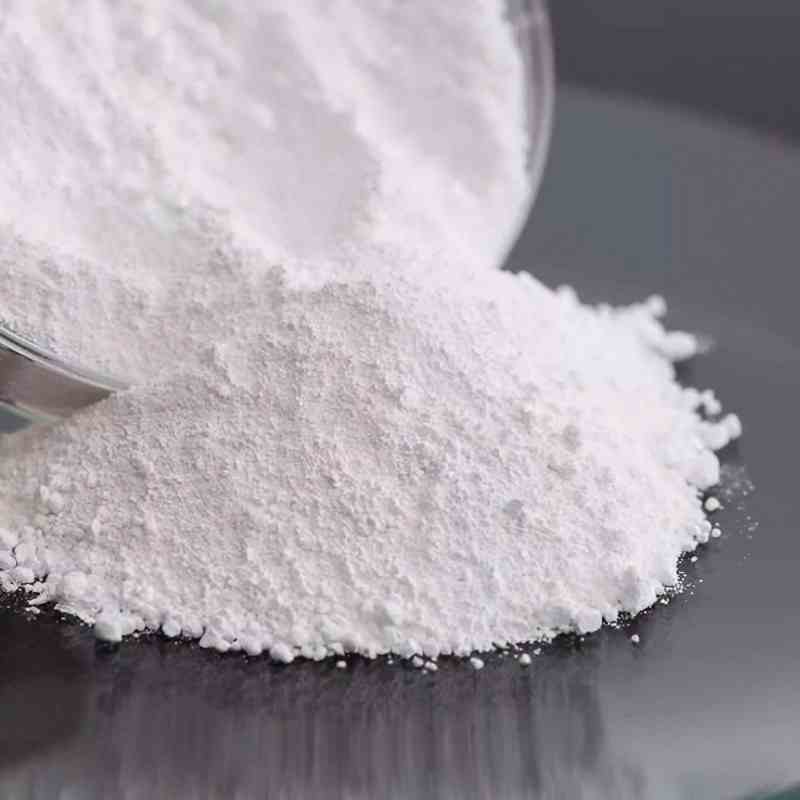
Limestone powder: The “Performance Savior” of Expressways

Under high and low temperature conditions, traditional asphalt pavements are prone to diseases such as rutting, blisters and cracks. To enhance performance, limestone powder is added as a modifier, which can significantly improve the high-temperature stability and low-temperature crack resistance of asphalt, and extend the service life of the pavement.
To solve these problems, engineers, through continuous research and practice, discovered a magical material – limestone powder. Adding limestone powder as an asphalt modifier to asphalt can significantly improve the performance of asphalt, enabling it to better adapt to harsh environments in different seasons.
Magical Transformation: The Modified Magic of Limestone Powder
(1) High-temperature resistance principle
Limestone powder (CaCO₃) has a large specific surface area and can adsorb asphalt molecules to form a stable asphalt film, restricting its high-temperature flow and increasing viscosity. Macroscopically, it enhances the resistance to rutting and reduces high-temperature deformation.
(II) Low-temperature resistance mechanism
Limestone powder is uniformly dispersed in asphalt, playing a “buffering” role, absorbing low-temperature shrinkage stress and preventing stress concentration cracking. In practical applications, it is used to enhance the low-temperature crack resistance of road surfaces and extend their service life.
Behind the significant improvement in the performance of highway asphalt brought by limestone powder lies the silent dedication of the Cronus grinding mill. With its outstanding technology and reliable product quality, Cronus has become a key force in the production of high-quality limestone powder.
Display of powerful and capable models
To meet the demand of highway asphalt mixing plants for 150-200 mesh limestone powder, Cronus has launched a series of high-performance grinding mill models, among which the CRRM improved grinding mill and the vertical mill CRLM series perform particularly well.
The CRRM improved grinding mill is one of Cronus’ star products. Its maximum feed size can reach 20mm. When processing limestone, the output ranges from 1.5 to 10 tons per hour depending on the fineness of the raw materials. The outer diameter of its grinding ring is φ1280mm, and the size of the grinding roller (outer diameter × height) is φ370×240mm. This design effectively enhances the grinding surface and grinding force, thereby increasing the output. The finished product particle size can be adjusted freely within the range of 80 mesh to 600 mesh, fully meeting the requirements for producing limestone powder with a particle size of 150 mesh to 200 mesh.
The CRLM series of vertical mills is also not to be underestimated. It is a new type of grinding equipment designed by Cronus based on extensive collection of various vertical mill materials at home and abroad, absorbing advanced foreign technologies and combining the characteristics of China’s industry. The finished product particle size of this series of grinding mills ranges from 80 to 600 mesh, and the production capacity is between 6 and 240 tons per hour (depending on the size of different models), which can meet the demands of large-scale production and provide sufficient limestone powder for highway construction.
Unique Working principle
The working principle of the Cronus grinding mill is scientific and efficient. Taking the improved CRRM grinding mill as an example, the material is first preliminarily crushed by the jaw crusher, then sent into the storage hopper by the elevator, and finally evenly sent into the main grinding chamber through the vibrating feeder. In the grinding chamber of the main machine, the grinding roller is tightly pressed against the grinding ring under the action of centrifugal force. The scraper lifts the material and sends it into the grinding area between the grinding roller and the grinding ring. Under the crushing of the grinding roller and the friction of the grinding ring, the material is crushed.
The crushed materials are carried into the classifier by the airflow formed by the blower. The classifier adopts an internal large-blade conical turbine classifier. Under the action of the classifier rotor, the materials that do not meet the fineness requirements are thrown towards the cylinder wall and fall into the grinding chamber for re-grinding, while the materials that meet the fineness requirements are carried by the airflow through the pipeline into the cyclone collector for separation and collection, and then discharged through the discharge device as the finished powder. The entire airflow system is a closed-loop circulation system. Except for the positive pressure from the fan to the grinding chamber of the main unit, the airflow in the other pipelines flows under negative pressure, effectively preventing dust from escaping and ensuring a clean production environment.
The working principle of the CRLM series vertical mill is different. Materials enter the center of the grinding disc through the air-locking feeding equipment and are dispersed to the edge under the action of centrifugal force. Under the hydraulic action, the grinding roller crushes the material. The fine powder after grinding is carried into the separator by the airflow. The qualified finished product enters the dust collector with the airflow for collection, while the coarse powder falls back for re-grinding. This roller grinding method makes the grinding efficiency higher and the energy consumption lower.
Outstanding performance highlights
The Cronus grinding mill has many highlights in terms of performance. First of all, it has excellent environmental protection performance. Whether it is the CRRM improved grinding mill or the CRLM series vertical mill, they are all equipped with pulse dust collectors, with a dust collection rate as high as 99.9% and an emission concentration of less than 20mg/m³, meeting the strict national environmental protection standards and effectively reducing the impact of dust on the environment and the health of operators.
In terms of energy conservation, the Cronus grinding mill also performs exceptionally well. The CRLM series of vertical mills adopts advanced grinding principles and structural designs, which are 30% to 50% more energy-efficient than traditional ball mills and have lower system power consumption. Taking a certain highway asphalt mixing plant as an example, after using the Cronus CRLM series vertical mill, the annual electricity bill was reduced by hundreds of thousands of yuan compared with the use of traditional ball mills, significantly lowering the production cost.
High production capacity is also a major advantage of the Cronus grinding mill. The improved CRRM grinding mill has enhanced the grinding surface and grinding force by optimizing the main machine design, such as increasing the size of the scraper, raising the grinding roller and grinding ring, etc. As a result, the output has increased by 30% to 50% compared with the original 4R3220 grinding mill. Meanwhile, the classifier adopts an internal large-blade conical turbine classifier, which enhances the classification accuracy and the area through which the airflow passes, making the particle size of the finished product more uniform and significantly improving the production efficiency.
Intelligent control is also a major feature of the Cronus grinding mill. This series of grinding mills are equipped with a PLC automation system, which can achieve one-click start and stop, remote monitoring, and real-time adjustment of mill parameters such as the speed of the analyzer and the feed rate, ensuring the stable operation of the equipment. When the equipment malfunctions, the sensor will monitor data such as bearing temperature and vibration, and automatically sound an alarm to promptly notify the operator for handling, reducing downtime and enhancing production efficiency.
Hand in hand: Safeguarding expressways
Limestone powder, as an asphalt modifier, can significantly enhance the high and low temperature performance of the pavement and reduce rutting and cracks. The Cronus grinding mill, with its highly efficient and intelligent production technology, provides a crucial guarantee for the supply of high-quality limestone powder. With the development of expressway construction, the two will continue to promote the improvement of road quality and jointly build a more solid and durable transportation infrastructure.


